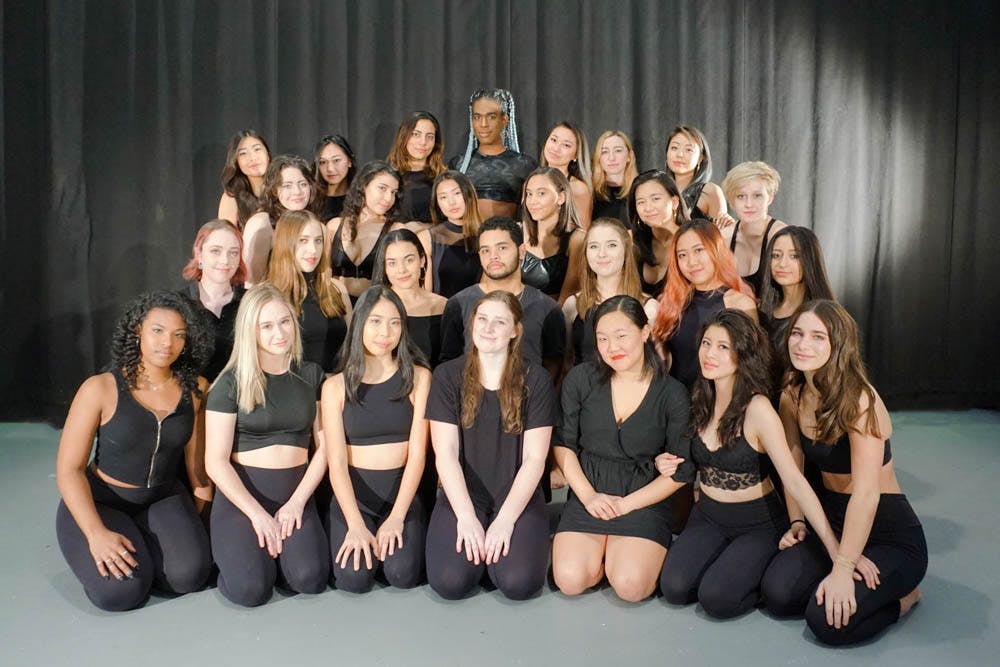Dancers moved with grace and fluidity in Fusion Dance Company’s 37th Annual Spring Show this past weekend, offering an emphatic and stylistically diverse performance.
The performance’s medley is emblematic of the dance group’s values. Fusion was founded in 1983 by Paula Franklin, who “felt the need for more student choreography on campus,” according to the group’s “Herstory,” which was read aloud at the beginning of the show. Though the group had lost touch with Franklin, this year saw a rekindling of the group’s relationship with its founder, explained Jillian Cai RISD ’20, one of Fusion’s current directors.
So, in homage to Franklin, the theme of this year’s annual performance, titled “Chroma,” reintroduced the company’s original spirit. The “Herstory” described the mission statement of Fusion as a “tradition of a multi-cultural, multi-ethnic group of dancers who perform a variety of styles and do not conform to modern-day constraints on body shape, size, dance style or choreography.”
After the introduction of Fusion’s mantra, the show proceeded to oscillate between numbers of emotionally cathartic contemporary, optimistic hip-hop and comedic interlude. Despite its stylistic variances, the show was far from incoherent, as the company directors “worked closely with choreographers throughout the year to plan out a fluid performance to showcase the individual pieces,” Cai said. And, because the company begins rehearsals right after its auditions in the fall, there is plenty of time for careful construction of the performance’s program.
Cai emphasized that many of the pieces addressed the disparate and multifaceted parts of identity, working to overcome and honor obstacles choreographers faced in their own lives. “As the year goes on, and the choreographers start to learn about their cast, their visions really develop around their individual dancers,” she explained of the creative process.
The show opened with a dance choreographed by Cai herself, and as the full company took the stage, silhouetted by vibrant gel lights, they embodied a modern interpretation of traditional Chinese dance. Titled “Pistachio” in Chinese, Cai’s performance was a glance into her own identity: “I did some traditional Chinese dance growing up, and although I was never formally trained, I really appreciated it and wanted to incorporate it in my piece rather interpretively,” she said.
As the song “CASH OUT” by Noga Erez and featuring Sammus began to play, the lighting design drew attention to the forms of the dancers, rendering them representations of organic human movement. As the lights brightened, they revealed the dancers’ elongated sleeves that reference traditional Chinese dance costumery, according to Cai. The song moved into “Anything” by SZA, and the dancers began to play with the sleeves, wrapping themselves and one another in the garb to the expressive R&B tune.
In another performance, “they gon’ feel,” choreographed by Lindsey Ruda ’20, red and yellow lights and costumes accentuated the interpretive movements of the nine dancers. Ruda described her piece as split into two parts in the program. The “first explores the inherent absurdity we feel when subject to our own emotions. … The latter half represents the mental work behind pulling ourselves out of a tough time and realizing our own strength.” The alternating harsh and fluid movements of dancers made the emotional shifts tangible in Ruda’s piece, which began with Sam Cooke’s melancholic “Sad Mood” and finished with Tyler, the Creator’s poignant and bright “IGOR’S THEME.”
These themes of emotional weight and personal identity were broken up by blips of humorous interlude, one of which included a compilation of TikTok dances — undoubtedly a crowd hit. The audience was ceaselessly lively and buoyant, as frequent shouts of dancers’ names made for a supportive and amiable viewing atmosphere.
Cai, who has been on Fusion since her freshman year, described the company as “a community so close that they all become like family.” That family-like connection was communicated with lucidity to audience members. Caroline Rotenstreich ’22, who came in support of a friend, reflected that “the bond of the performers really came through in each performance in their passionate expressiveness.”





